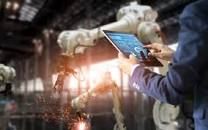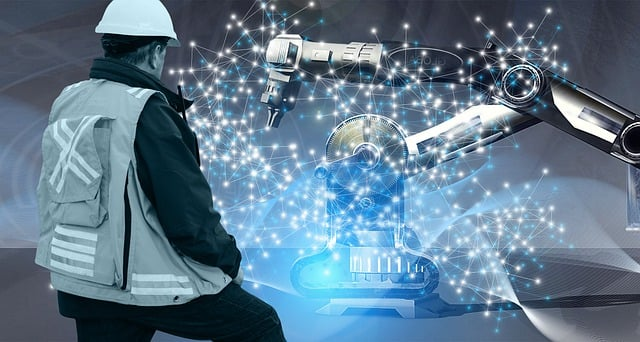Robotics and Automation: Transforming Industries and Job Market
The rapid advancement of technology has paved the way for robotics and automation to become integral parts of our lives. From manufacturing and healthcare to transportation and even our homes, these cutting-edge technologies are transforming the way we live and work. In this blog post, we will delve into the world of robotics and automation, exploring their benefits, applications, and the impact they have on various industries.
Enhancing Efficiency and Productivity:
One of the key advantages of robotics and automation is their ability to enhance efficiency and productivity in various sectors. In manufacturing, robots can perform repetitive and strenuous tasks with precision and consistency, leading to increased production rates and improved quality control. Automated systems also streamline processes, reducing human errors and minimizing downtime. The result is faster production cycles, reduced costs, and improved overall efficiency.
Improving Safety and Working Conditions:
Robots are adept at performing tasks in hazardous or dangerous environments where human safety is a concern. For example, in mining, oil and gas, and nuclear power industries, robots can handle operations that would otherwise pose risks to human workers. By replacing humans in these environments, robotics protects lives and contributes to improved working conditions, reducing the potential for accidents and injuries.
Advancements in Healthcare:
Robotics and automation have made significant contributions to the healthcare industry. Surgical robots enable surgeons to perform complex procedures with enhanced precision, leading to better patient outcomes and shorter recovery times. Robotic exoskeletons assist in rehabilitation, helping individuals regain mobility and independence. Additionally, telemedicine robots allow for remote consultations, making healthcare accessible to patients in remote areas. The integration of robotics in healthcare has revolutionized treatment methodologies and opened doors to innovative solutions.
Transforming Transportation and Logistics:
Automation is reshaping the transportation and logistics sectors, making processes faster, more efficient, and cost-effective. Self-driving vehicles, such as autonomous cars and trucks, have the potential to revolutionize transportation, increasing safety and reducing traffic congestion. In logistics, automated systems handle tasks such as sorting, packaging, and order fulfillment, improving speed and accuracy while minimizing errors. These advancements are changing the face of supply chain management and revolutionizing the way goods are transported and delivered.
Embracing Collaborative Robotics:
Collaborative robots, or cobots, are designed to work alongside humans, providing assistance and enhancing productivity. These robots can take on repetitive or physically demanding tasks, allowing human workers to focus on more complex and creative endeavors. Cobots are becoming increasingly prevalent in manufacturing, healthcare, and agriculture industries, fostering human-robot collaboration and creating new job opportunities requiring specialized skills.
MARKET SURVEY
The world market for robotics and automation has experienced remarkable growth in recent years, driven by technological advancements, increasing demand for efficiency and productivity, and the need to address labor shortages and safety concerns. In this blog post, we will dive into the world market survey on robotics and automation, exploring key trends, market size, major players, and future projections.
Market Size and Growth:
The global market for robotics and automation has been expanding at an impressive rate. According to recent market surveys, the market size was valued at around $XX billion in 2023 and is projected to reach $XX billion by 2026, growing at a compound annual growth rate (CAGR) of XX%. The market growth is attributed to the adoption of robotics and automation across various industries, including manufacturing, healthcare, logistics, agriculture, and more.
Key Industries and Applications:
Manufacturing remains the dominant sector in the robotics and automation market. The automotive industry, in particular, has been a key driver of growth, deploying robots in assembly lines and material handling processes. However, other industries such as healthcare, logistics, and agriculture are also witnessing significant adoption. Surgical robots, warehouse automation, and autonomous agricultural machinery are just a few examples of the diverse applications of robotics and automation.
Regional Market Analysis:
The market survey reveals regional variations in the adoption of robotics and automation. Asia-Pacific holds the largest market share, driven by countries like China, Japan, and South Korea, known for their manufacturing prowess. North America and Europe are also significant players, with strong investments in automation technologies across various sectors. Additionally, emerging economies in Latin America and Africa are expected to witness substantial growth in the coming years.
Major Players and Innovation:
The market survey identifies several key players driving the robotics and automation market. Companies such as ABB, Fanuc, Yaskawa, Universal Robots, and KUKA are leading the way with their advanced robotic solutions. These companies are continuously innovating, developing robots with increased capabilities, collaborative features, and artificial intelligence integration. Start-ups and smaller companies are also emerging, contributing to the overall market competitiveness and fostering innovation.
Future Projections:
The future of the robotics and automation market looks promising. Advancements in artificial intelligence, machine learning, and sensor technologies will further enhance the capabilities of robots and automation systems. The development of collaborative robots that can safely work alongside humans will lead to new applications and increased adoption. Additionally, the integration of robotics with emerging technologies like 5G, IoT, and edge computing will unlock new possibilities, revolutionizing industries and creating new market opportunities.
The world market survey on robotics and automation demonstrates the significant growth and potential of these technologies across various industries and regions. As companies strive for increased productivity, efficiency, and safety, the adoption of robotics and automation continues to rise. Key players in the market are pushing the boundaries of innovation, introducing advanced robotic solutions that cater to evolving needs. With the ongoing technological advancements and emerging trends, the future of the robotics and automation market is poised for continued growth and transformative impact.
Transforming Industries and Job Market
In recent years, the fields of robotics and automation have witnessed significant advancements that are reshaping industries and revolutionizing the job market. From manufacturing and logistics to healthcare and agriculture, robots and automated systems are playing a pivotal role in streamlining processes, increasing efficiency, and transforming traditional job roles. In this blog post, we will explore how robotics and automation are making an impact across various industries and discuss the implications for the job market.
Automation in Manufacturing:
Robots have become a common sight on factory floors, taking over repetitive and labor-intensive tasks. Automation in manufacturing processes has led to increased productivity, improved quality control, and reduced costs. Human workers are now collaborating with robots, focusing on more complex and creative aspects of production. While this shift has created some concerns about job displacement, it has also generated new job opportunities in robot programming, maintenance, and supervision.
Logistics and Warehousing:
The logistics industry is experiencing a rapid transformation with the integration of robotics and automation. Automated guided vehicles (AGVs) and drones are replacing manual labor in tasks such as order picking, sorting, and inventory management. These technologies enhance speed, accuracy, and cost-effectiveness. While some jobs in warehousing may be affected, new roles in robotics maintenance, fleet management, and data analysis are emerging.
Healthcare and Robotics:
Robots are playing a vital role in healthcare, assisting in surgeries, patient care, and rehabilitation. Surgical robots enable surgeons to perform complex procedures with precision and minimal invasiveness. Robotic exoskeletons help patients regain mobility and strength. Moreover, telepresence robots facilitate remote consultations, enabling healthcare professionals to reach patients in remote areas. Robotics in healthcare is augmenting human capabilities, improving patient outcomes, and creating demand for specialized healthcare robotics experts.
Agriculture and Farming:
Automation is revolutionizing the agriculture industry, addressing labor shortages and increasing productivity. Autonomous vehicles and drones are used for planting, harvesting, and monitoring crop health. Robots equipped with computer vision and machine learning technologies can identify and eliminate weeds, reducing the need for herbicides. Agricultural automation not only enhances efficiency but also presents opportunities for farmers to upskill and transition into roles like precision agriculture analysts or robot fleet managers.
Implications for the Job Market:
While the adoption of robotics and automation may lead to some job displacement, it also presents opportunities for upskilling and reskilling the workforce. As robots take over repetitive tasks, human workers can focus on higher-value activities that require critical thinking, creativity, and emotional intelligence. The need for skilled technicians, robot programmers, data analysts, and AI specialists will rise. Embracing lifelong learning and adaptability will be crucial for individuals to thrive in the evolving job market.
Robotics and automation are transforming industries by optimizing processes, improving efficiency, and augmenting human capabilities. While concerns about job displacement exist, the integration of robots and automation also creates new job opportunities and demands a shift towards a more skilled workforce. Adapting to this technological shift and preparing for the future will be essential for individuals and businesses alike. By embracing automation and upskilling, we can harness the potential of robotics to build a more productive and innovative society.









Comments
Post a Comment